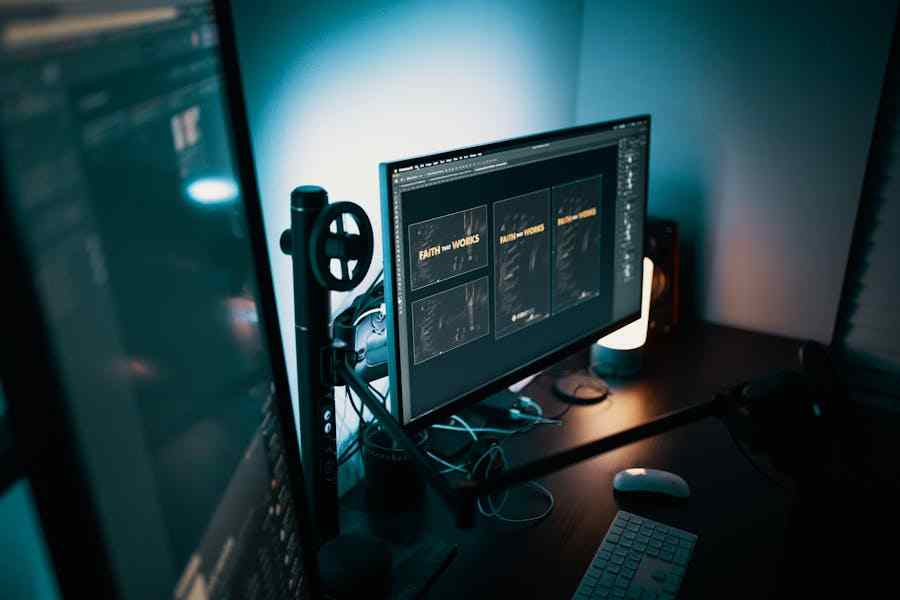We live in such a fast paced world that we often don’t have any time or patience to wait. If we’re buying a new piece of technology, we usually rely on standard models. We go to the store or browse online, compare prices and choose the device we need in a matter of minutes. It’s usually the quickest solution and the only one that doesn’t take too much of our time. The standard models are pretty easy to find and they’re usually available in most nearby stores. These models usually have standard dimensions and features and they’re more affordable. If you don’t need anything advanced or specific, a standard model works just fine.
But, it will often happen that businesses or individuals need something specific that can’t be found just anywhere. For instance, when speaking about LCD screens, you can either choose between standard or custom models. A standard LCD screen is easy to find and has a better price tag. So, you just go to the store, buy the model you prefer and that’s the end of it. But, if you need a custom model, it’s not that simple. A customized solution takes more time and dedication. You need to be fully aware of what you want and need before you even start talking with a custom LCD display manufacturer.
Custom LCD screens provide tailored solutions and are able to fit specific applications where standard dimensions just won’t cut it. Also, sometimes the dimensions aren’t all that matters. Often, the customer needs a very specific feature that’s not available in standard LCD displays. No matter the reason, you need to be aware of how the design process works and what it requires on your end.
Custom LCD screens play a big role across many industries and they’re a great and durable solution for most applications. As an end result, you get a reliable and advanced screen unique to your application.
How Do We Define Custom LCD Screens?
Standard LCD displays are used to display information on most electronic devices. When it comes to custom LCD solutions, things are a bit different. They are designed to fit specific dimensions and the user can choose the features to be added to additionally improve the screen.
As a potential user, you’re able to fully customize the screen and arrange everything you need with the manufacturer. This high-level of customization is what makes a custom LCD screen irreplaceable in different industries.
The Stages Of Designing A Custom Screen
How does the design process of a custom LCD actually work? Well it involves several steps. And as a user that’s thinking about getting a custom screen, you need to be aware of at least some details before you make your final decision.
You’ll also need to choose a reliable custom LCD manufacturer. The custom LCD manufacturing process at Phoenix Display is efficient and completely tailored to what the customer needs. Everything is arranged in accordance with the customer and the end product is both reliable and cost-efficient.
Define what you need
Before anything else, it’s important to exactly define what you need and do it very specifically. Think about what are the dimensions you need and where the screen will be used. It’s not the same if your device is used in harsh environments or if it’s intended for home use, So, make sure to have that in mind when speaking to the manufacturer. That’s the first step to a successful design process.
It’s where you’ll define viewing angles, resolution specifications and any other features that are important for your application. Once you have everything outlined and communicated with your manufacturer, that’s when the manufacturing begins.
First prototypes
The second stage involves making the first prototypes according to your outlined specification in phase one. It’s where you’ll actually be able to visualize and see initial designs of what you asked for. Prototypes are a big advantage as they allow you to see real-life representations of your model and make changes if you’re not satisfied. You can give your feedback at this point and that will help optimize the end design.
Selecting materials and additional features
The process of choosing materials is crucial for the performance of the custom LCD screen. What you choose will dictate the durability of your screen. In this stage you choose the type of glass and backlight technology, all of which will impact the image quality in the end as well as the power-efficiency of your display. Consult with your manufacturer if you’re not sure which solution is the best one.
Also, if you need a special feature integrated, make sure to mention it. For instance, many opt for touchscreen integration. In many modern applications, having a touchscreen option is a must.
End product in your hands
After all the hard work, this is where you get to see your final product shine. However, it’s important to highlight that the process doesn’t really end here. Maybe you’ll need additional support or you’ll end up needing more screens. No matter the case, it’s always advised to stay in touch with the manufacturer for any future collaborations or if you need some help with the screen later on.
The key takeaways: The custom LCD design process
If you end up needing a custom LCD, we hope that it’s now easier to understand the design process. With a trustworthy manufacturer, it’s all much easier and smooth. You get to align everything and your feedback is always taken into consideration. So, remember to have a clear idea of what you need and communicate all these things very early on. That way you’re guaranteed to get the final product you need.





















